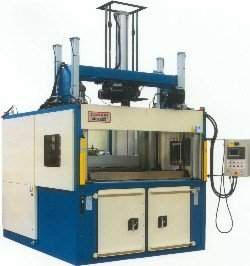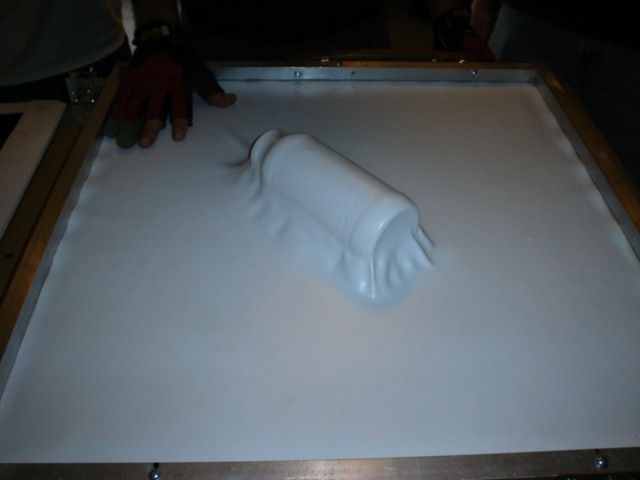Vacuum forming
From DDL Wiki
Contents |
History
Vacuum forming is one of the oldest methods of molding plastics. Its uses can be traced back to the 19th century. Vacuum forming use in industry, however, remained limited until the 1950's when proper materials was discovered. At this point in time, vacuum forming was used for the manufacturing of containers, lids, and other food packaging. As technology advances, new materials became available for use with vacuum forming, such as fiberglass and other plastic polyolefins. These advances allow vacuum forming to become one of the most useful tools in manufacturing.
Concept
The concept behind vacuum forming is relatively simple. The idea is to use vacuum to produce an even dstrubution of pressure upon a surface of a material to allow the material to conform to the shape of a mold or a plug. This allows for a degree of precision in forming objects of complex shapes that other manufacturing processes may have difficulties with.

A vacuum forming machine.
Uses
As mentioned before, vacuum forming can be used in a variety of ways. In the early 20th century it was used to form simple acrylic and vinyl products, as well as food packaging. Contemporarily, vacuum forming is still used in the packaging of food, but new materials have allowed it to become much more versatile. One of the biggest uses for vacuum forming is the construction of modern boat hulls. Using a combination of fiberglass and carbon fibers, boat manufacturers are able to produce extremely strong and rigid hulls that are much lighter than more traditional metallic or wooden hulls.
Materials
Because vacuum forming is such a versatile production method, the materials necessary for vacuum forming depend on the type of object needed to be manufactured. In all cases, however, the use of a vacuum pump is required. The fabrication material depends on the type of product that is desired. Among the many types of materials available to use are polystyrenes, polycarbonate, polypropylene, and acrylic material. The type of material used for vacuumforming can range from softer, more flexible materials for products like food packaging, to much tougher fabrics like fiberglass for boat-hull building.
Process
1. The vacuum forming process begins with the softening of the plastic material. This can be accomplished by heating up the material.
2. Release agent is sprayed material or plug/mold.
3. The material is then spread over the surface of the mold or plug.
4. Vacuum is applied to the plastic material that conforms it to the shape of the mold/plug.
5. The plastic is allowed to cool and harden, then it may be removed from the mold/plug and trimmed down to proper size.

A Nantucket Nectars bottle is used as a plug for a vacuum forming experiment.
Limitations
Because of the way vacuum formed plastics are made, the objects manufactured are limited to details on only one side. Consequently, objects that revolute (doughnut shaped) cannot be manufactured using vacuum forming. Vacuum forming may also be a very expensive and time-consuming procedure in certain uses. For example, in boat-hull building, many layers are needed to form a strong hull. Each layer may be very costly and take up to several days to harden.
